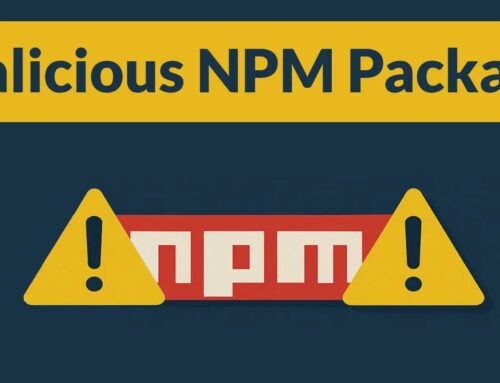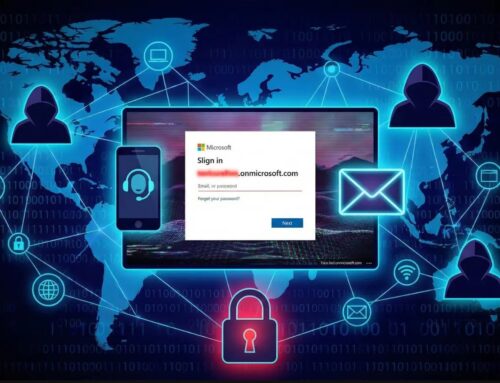
Threat Actors Allegedly Claiming Breach of Airpay Payment Gateway
The digital economy thrives on trust, particularly when it comes to money movement. A recent claim by threat actors alleging a breach of Airpay, a prominent Indian digital payment gateway provider, sends ripples through this trust foundation. This incident, reported by Cybersecurity News, underscores the persistent and evolving threat landscape facing critical financial infrastructure. The alleged compromise suggests the exposure of sensitive financial data, raising alarm bells for thousands of users and businesses reliant on Airpay’s services.
Threat actors are reportedly advertising Airpay’s complete database on dark web marketplaces. This development, if verified, highlights a significant lapse in data security and the potentially severe repercussions for individuals and organizations whose data may now be in the hands of malicious entities. This analysis delves into the implications of such a breach and outlines essential steps for bolstering cybersecurity defenses.
Understanding the Alleged Airpay Breach
The core of the issue lies in the alleged unauthorized access to Airpay’s systems. Airpay, as a payment gateway, processes a vast volume of transactions, handling sensitive information such as credit card details, bank account numbers, personal identifiable information (PII), and business financial records. A “complete database” advertised on the dark web suggests a comprehensive exfiltration of this critical data.
Such a breach can originate from various vectors, including:
- Exploitation of Software Vulnerabilities: Unpatched systems or vulnerabilities in web applications are common entry points.
- Phishing/Social Engineering: Tricking employees into revealing credentials or installing malware.
- Ransomware Attacks: While not explicitly stated as a ransomware attack, data exfiltration often accompanies such incidents.
- Insider Threats: Malicious or negligent actions by internal personnel.
The immediate consequence for Airpay, if these claims are legitimate, includes severe reputational damage, potential regulatory fines, and legal liabilities. For affected users and businesses, the risks range from identity theft and financial fraud to business disruption and data extortion.
Implications of a Payment Gateway Compromise
A breach at a payment gateway has far-reaching consequences due to its central role in the financial ecosystem. Unlike individual company breaches, a payment gateway compromise can act as a single point of failure affecting numerous downstream entities. The exposure of sensitive financial data can lead to:
- Widespread Financial Fraud: Stolen credit card numbers and bank account details can be used for unauthorized purchases and bank transfers.
- Identity Theft: PII within the database can be leveraged for sophisticated identity theft schemes.
- Business Email Compromise (BEC): Financial data can aid in crafting highly convincing BEC attacks against businesses.
- Reputational Damage and Loss of Trust: For both Airpay and potentially for businesses using its services, trust is eroded, impacting customer loyalty and market standing.
- Regulatory Scrutiny and Penalties: Non-compliance with data protection regulations (e.g., PCI DSS, GDPR, local Indian data privacy laws) can result in significant fines.
The alleged advertisement of the database on dark web marketplaces signals the intent of threat actors to monetize the stolen data. This means the risk to affected individuals and businesses is ongoing and multifaceted.
Remediation Actions and Best Practices for Digital Payment Security
In light of this alleged incident, and as a general principle for all organizations handling sensitive financial data, robust cybersecurity measures are paramount. While specific remediation for Airpay would involve forensic investigation and immediate containment, here are generalized, actionable recommendations:
- Incident Response Plan Activation: Immediately activate a comprehensive incident response plan, including containment, eradication, recovery, and post-incident analysis.
- Forensic Investigation: Conduct a thorough forensic analysis to determine the scope, root cause, and impact of the breach. Identify the specific vulnerabilities exploited.
- Database Security Enhancements: Implement multi-layered security for databases, including strong encryption for data at rest and in transit, strict access controls (least privilege principle), and regular vulnerability assessments.
- Patch Management: Maintain a rigorous patch management program for all systems, applications, and network devices. Address critical vulnerabilities যেমন CVE-2023-46805 (related to Ivanti Connect Secure) or CVE-2024-21447 (related to Outlook) promptly, as unpatched systems are favored attack vectors.
- Network Segmentation: Implement strong network segmentation to limit the lateral movement of threat actors within the network.
- Multi-Factor Authentication (MFA): Enforce MFA for all accounts, especially privileged access and external-facing services.
- Employee Training and Awareness: Conduct regular cybersecurity training for all employees, emphasizing phishing awareness, secure coding practices, and data handling protocols.
- Threat Intelligence Integration: Continuously monitor threat intelligence feeds for emerging threats and vulnerabilities relevant to payment systems.
- Regular Security Audits and Penetration Testing: Perform routine security audits and engage third parties for penetration testing on critical systems to identify weaknesses before attackers do.
- Data Minimization and Retention Policies: Review and implement strict data minimization policies, only collecting and retaining data that is absolutely necessary for business operations.
Essential Tools for Cybersecurity Professionals
Effective cybersecurity relies on a robust toolkit. For professionals addressing potential compromises in payment gateways or similar critical infrastructure, the following categories of tools are essential:
| Tool Category | Purpose | Examples & Use Case |
|---|---|---|
| Endpoint Detection and Response (EDR) | Provides real-time visibility, detection, and response capabilities on endpoints. | CrowdStrike Falcon, Microsoft Defender for Endpoint: Crucial for detecting anomalous activity post-compromise. |
| Security Information and Event Management (SIEM) | Aggregates and analyzes security logs from various sources to detect threats. | Splunk Enterprise Security, QRadar, Elastic SIEM: Central for correlating events and identifying attack patterns. |
| Vulnerability Scanners | Identifies security weaknesses in networks, applications, and systems. | Nessus, Qualys, OpenVAS: Essential for proactive identification of unpatched vulnerabilities. |
| Web Application Firewalls (WAF) | Protects web applications from common attacks like SQL injection and XSS. | Cloudflare WAF, Akamai WAF: Shields payment gateways from OWASP Top 10 exploits. |
| Data Loss Prevention (DLP) | Prevents sensitive data from leaving the network without authorization. | Symantec DLP, Forcepoint DLP: Can prevent large-scale data exfiltration events. |
| Threat Intelligence Platforms (TIP) | Collects, processes, and disseminates threat intelligence. | Recorded Future, Anomali: Provides context on threat actor tactics, techniques, and procedures (TTPs). |
Conclusion
The alleged Airpay breach serves as a stark reminder of the continuous and sophisticated threats facing digital payment infrastructures. The potential exposure of sensitive financial data of thousands of users and businesses highlights the critical need for unwavering commitment to cybersecurity by all entities in the financial ecosystem. For payment gateways, robust security frameworks, continuous monitoring, and proactive vulnerability management are not merely best practices—they are foundational requirements for maintaining trust and ensuring the stability of the digital economy. Users must remain vigilant, monitor their financial statements, and be wary of unsolicited communications that could be phishing attempts leveraging compromised data.





